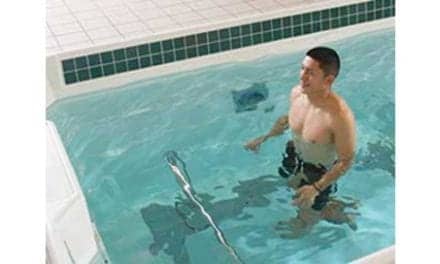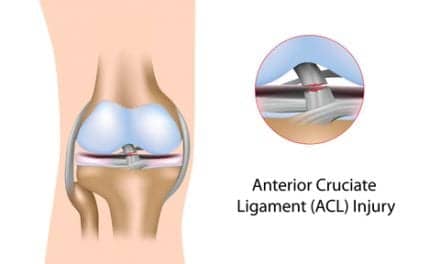Designed to address an “epidemic” of knee injuries in younger skeletally immature athletes, the device for ACL reconstruction in children was developed and adapted for use in this high-risk group of young athletes with the help of surgeons at Hospital for Special Surgery.
The US Food and Drug Administration (FDA) has provided clearance for use of the ACL TightRope II implant as the first-ever device for reconstructing torn knee ligaments in children and adolescents. The technology, from the company Arthrex, is based on a related device commonly used in adults undergoing anterior cruciate ligament (ACL) reconstruction, but with features specifically designed to accommodate the growing skeletons of young athletes.
The key advantage of the new technique is that it allows surgeons to tension the graft sequentially to ensure proper fixation and strength and to utilize minimally invasive techniques to diminish damage to the growth plates while performing a successful ACL reconstruction in children.
“Surgery to utilize the implant for graft fixation is more efficient and effective than previous methods and has been shown to result in more successful outcomes,” says Frank A. Cordasco, MD, MS, a sports medicine surgeon at Hospital for Special Surgery (HSS) in New York City. Cordasco and an HSS colleague, pediatric orthopedic surgeon Daniel W. Green, MD, MS, FAAP, FACS, have partnered in this effort and are among the nation’s leaders in using the approach in the operating room.
Tears of the ACL, a structure that is essential for knee stability during lateral movement, have become increasingly common in children and young adolescents over the past two decades, largely as a result of greater participation of both boys and girls in competitive team sports.
Until relatively recently, however, surgeons were reluctant to operate on children whose growth plates in the legs had not fused. Doing so carries the risk of permanent deformities to the long bones (femur and tibia) that meet at the knee, explains Green. Historically, the solution for most of these patients was to treat them with a brace and hope for the best until their bones had matured. But in the majority of cases, the non-operative approach led to serious problems, including further damage to the joint, as well as psychosocial effects by limiting the young athletes’ participation in sports until they reached skeletal maturity a few years later.
The Cordasco-Green technique of all-epiphyseal ACL reconstruction was developed in collaboration with Arthrex for use in the youngest athletes with more than three years of remaining growth. This approach involves the use of pediatric-specific instrumentation guides to drill sockets for the ACL graft and avoid the growth plate and thereby diminish the potential for growth disturbance.
The complete transphyseal technique is indicated in young adolescent athletes who are approaching skeletal maturity.
It has reportedly provided superior outcomes in terms of the need for revision surgery and return to sports. “Our research has demonstrated that more than 90% of children who have undergone the surgery with this implant at HSS have returned successfully to sports without the need for additional surgery,” says Cordasco.
“The ideal patient for the procedure is, in general, a child between the ages of 12 and 15 to 16, depending upon the athletes’ skeletal maturity, at which point the growth plates are effectively closed,” says Green. This group has seen an “epidemic” of ACL tears over the last 20 years, he adds.
Green concluded that the youngest children may not be good candidates for this approach, because their bones are not large enough to hold the sockets. The youngest children benefit from a different physeal-sparing approach using a combined intra- and extra-articular surgery utilizing the iliotibial band as a graft.
Photo Caption: Pediatric-specific instrumentation allows surgeons to drill growth plate sparring tunnels and sockets for ACL reconstruction. Photo: Arthrex





